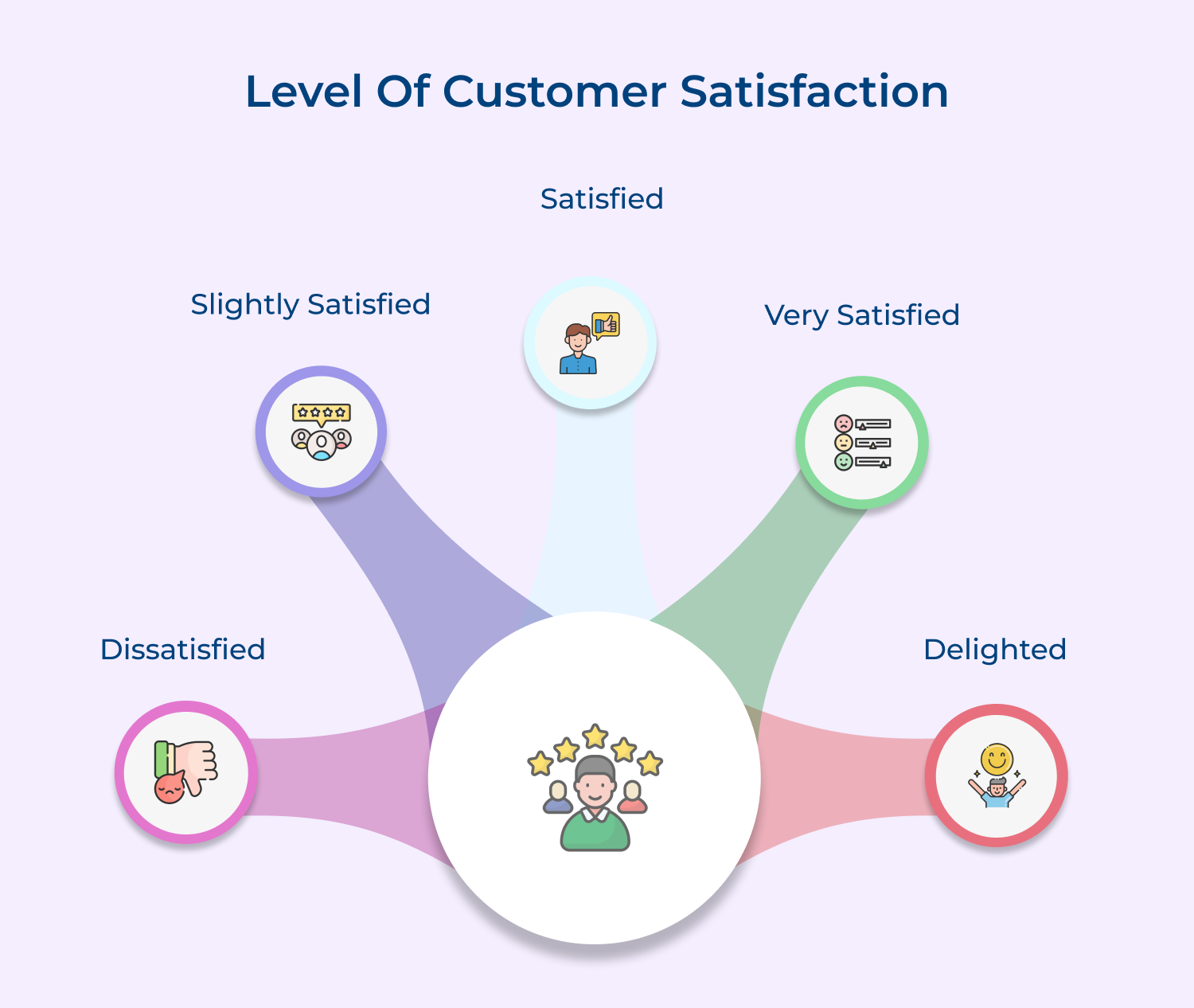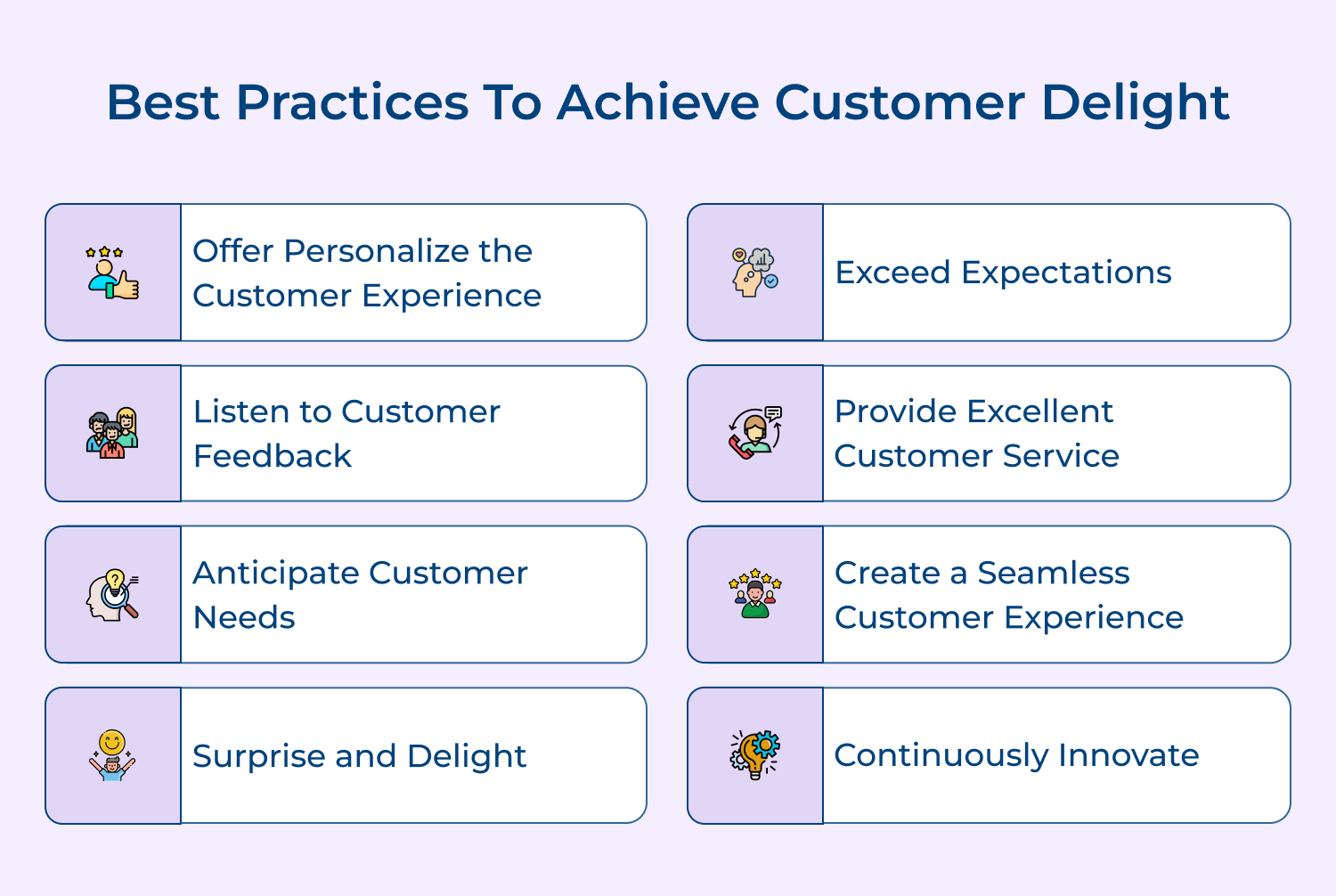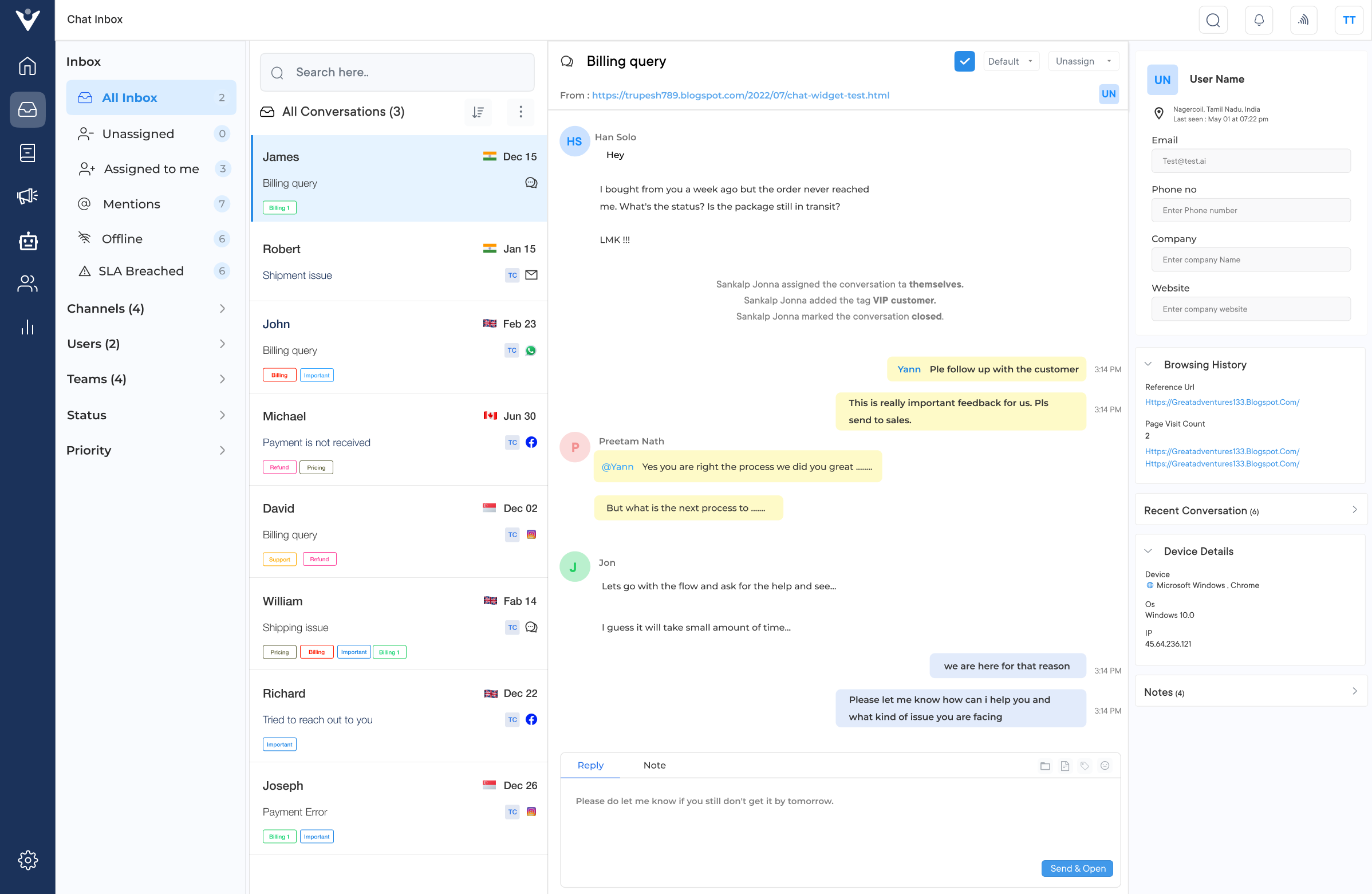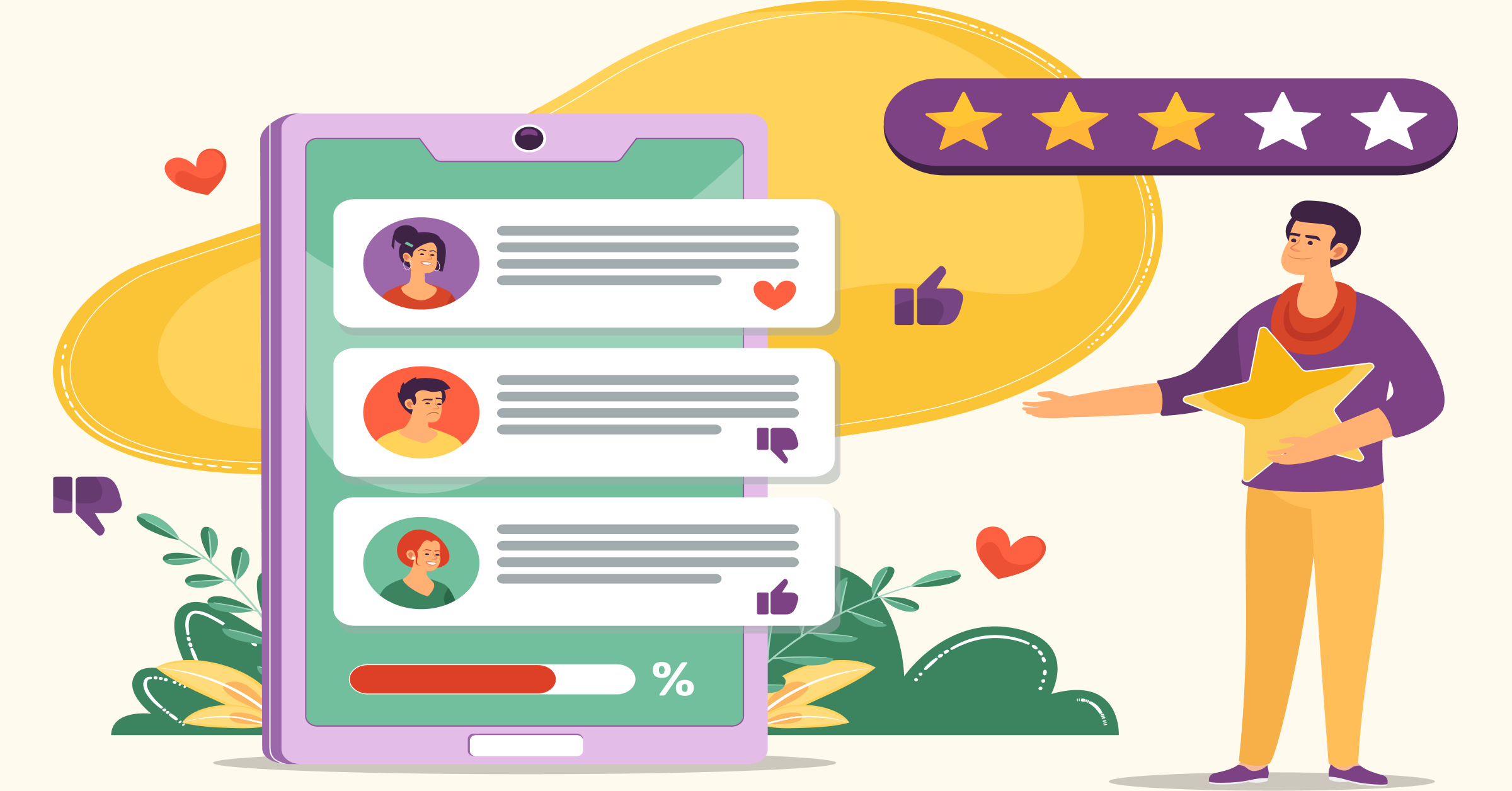1. Offer personalize the customer experience: Customers appreciate when businesses take the time to personalize their interactions. Use data and technology to tailor your communications to each individual customer.
2. Exceed expectations: Always aim to exceed customer expectations. Whether it’s through exceptional customer service, fast response times, or going the extra mile, exceeding expectations can leave a lasting impression.
3. Listen to customer feedback: Actively seek out and listen to customer feedback. Use the information to continuously improve your products and services to better meet customer needs.
4. Provide excellent customer service: Customer service is a key component of customer delight. Ensure that your customer service team is well-trained, accessible and able to quickly resolve any issues that may arise.
5. Anticipate customer needs: Anticipate what your customers may need before they even realize it. It could involve offering personalized recommendations, addressing potential pain points, or streamlining the customer journey.
6. Create a seamless customer experience: Make it easy for customers to interact with your business across all touchpoints. Whether it’s through your website, social media channels, or in-person interactions, ensure a cohesive and seamless experience.
7. Surprise and delight: Occasionally surprise your customers with unexpected gestures or rewards. It can create a positive emotional response and leave a lasting impression.
8. Continuously innovate: Stay ahead of the curve by continuously innovating and adapting to changing customer needs and market trends. By staying relevant and offering unique experiences, you can keep customers delighted and coming back for more.
Excellent Examples of Inspiring Customer Delight Experiences
Customer delight is more than just meeting expectations – it’s about creating an experience that goes above and beyond to truly impress and satisfy customers. Here are some real-life examples of inspiring customer delight experiences that have left a lasting impact on customers:
1. Zappos
Zappos is a prime example of going the extra mile to delight customers.
What they did – They once sent flowers to a customer who mentioned her feet were cold after trying on shoes, showing that they truly care about their customers’ well-being.
2. Chick-fil-A
The famous fast-food chain is known for its exceptional customer service, and one story that stands out.
What they did – When a Chick-fil-A employee climbed out of the drive-thru window to help a disabled customer with their order. Such acts of kindness not only delighted the customer but also showcased the company’s commitment to serving others.
3. Amazon
Amazon the e-commerce giant is known for its customer-centric approach.
What they did – Once when a customer’s package was stolen – despite it not being their fault, Amazon sent a replacement package free of charge, showing that they value customer satisfaction above all else.
4. Ritz-Carlton
The globally acclaimed luxury hotel chain is renowned for its exceptional service and delighting customers.
What they did – One of their customers left behind their stuffed giraffe at a Ritz-Carlton hotel. The staff went above and beyond to send the giraffe back to the customer, along with a photo album of the giraffe’s extended vacation at the hotel.
Top Platforms That Can Help to Achieve Customer Delight
Following real-life examples showcase how companies can create customer delight by offering exceptional customer service. Prioritizing customer satisfaction helps businesses build strong relationships with their clients and differentiate themselves in a competitive market.
Here are some real-life examples of showcasing customer delight and the steps to achieve it:
Omni24









